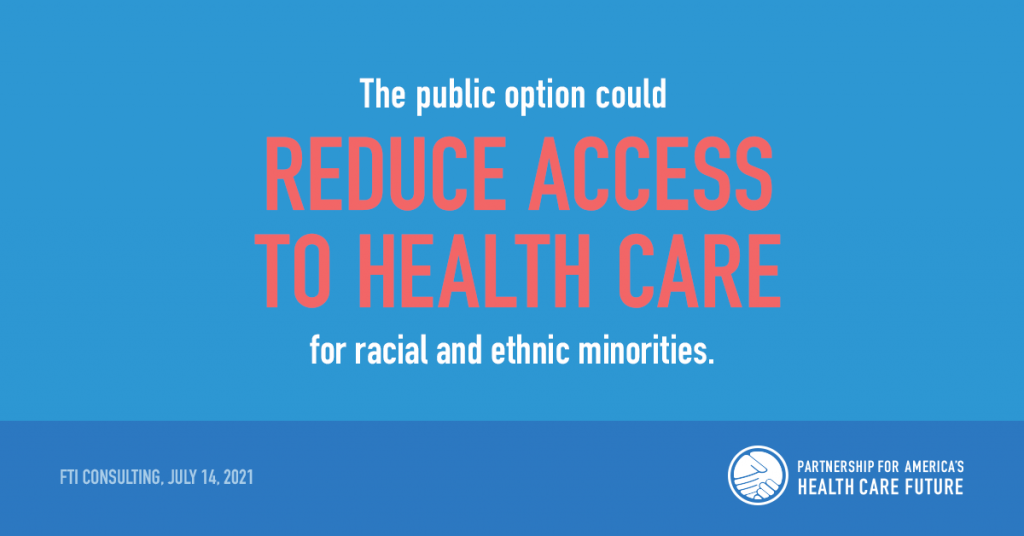As some federal lawmakers explore creating a new government health insurance system, a new report from researchers at FTI Consulting warns that creating the public option could disproportionately harm underserved communities – including racial and ethnic minorities and rural residents – reducing access to critical health care services. At the same time, FTI finds that the public option would have a minimal impact on the nation’s uninsured rate, reducing it by just 0.7 percentage points.

THE FACTS:
- While the public option aims to expand access to health care coverage, the coverage gains under the proposal are likely to be limited, reducing the overall national uninsured rate by only 0.7 percentage points.
- By increasing the number of individuals with public coverage characterized by low reimbursement rates, a public option could lead to more financial challenges for health care providers. Of the hospitals in the report’s sample, approximately half would lose money due to the public option, totaling $1.3B annually.
- More than 500 of these hospitals are already operating at a significant loss and would be at higher risk of financial distress under a public option.
- These higher risk hospitals could be forced to reduce service lines, shorten appointment times, or make staffing changes to make up for lost revenue, thereby diminishing access to essential health care services for patients.
- Almost one-third of the hospitals at higher risk under the public option serve communities where racial and ethnic minority patients are overrepresented and for whom barriers such as lack of reliable transportation may limit access to alternative sources of care.
- Hospitals that serve disproportionately diverse patient populations could lose a combined $45.8 million annually. Compounding the magnitude of this loss, approximately one quarter of these hospitals are the only hospital in their county.
- Black and Hispanic Americans experience worse health outcomes and more barriers to care compared to their white counterparts, meaning service line disruptions or hospital closures in racial and ethnic minority communities could be particularly catastrophic for these populations.
- Creating the public option could decrease access to care in rural communities by putting one in four rural hospitals at increased risk of financial distress. Of the higher risk rural hospitals in the sample, 90 percent were the only hospital in their county.
THE BOTTOM LINE:
Patients are relying on private plans and public programs to provide affordable, high-quality health coverage and care. Americans need lawmakers to build on and improve what’s working, not start over by creating a new government health insurance system like the public option that would threaten access to care for racial and ethnic minorities and rural Americans.